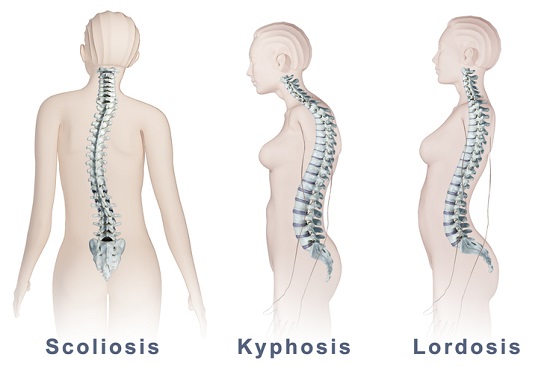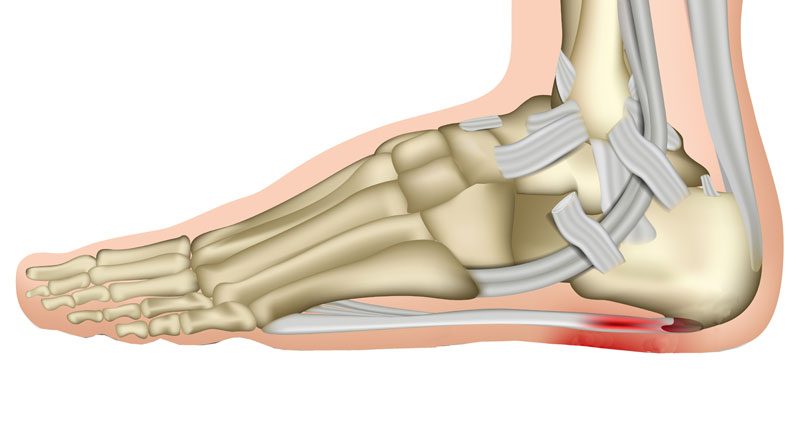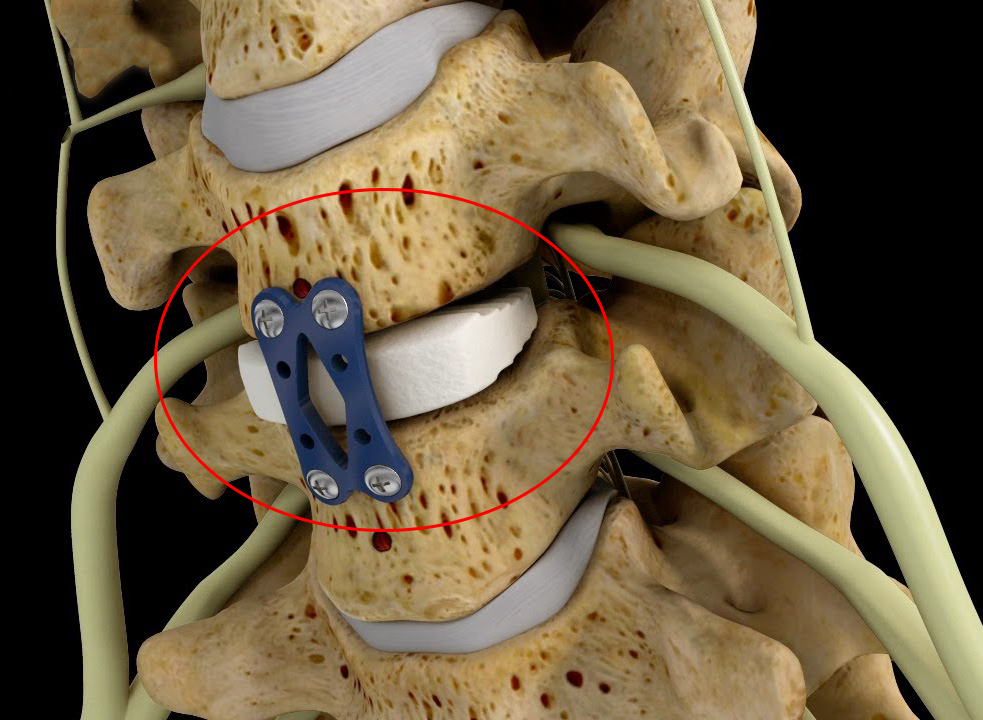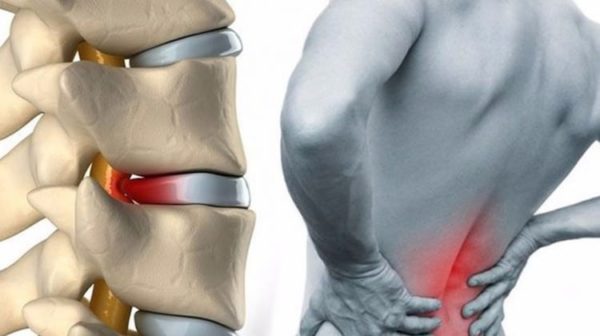What Are the Risks of Medical Neck Collars, and Can You Recover from Neck Disc?

Risks of Medical Neck Collars
- Weakness and Stiffness of Neck Muscles: Prolonged use of a neck collar can lead to weakness and stiffness of the neck muscles. The neck collar restricts neck movement, affecting the strength and flexibility of the muscles. This can result in difficulty in moving the neck and reduced range of motion.
- Increased Blood Pressure in the Head: Among the potential risks of wearing a medical neck collar, there may be an increase in blood pressure in the head. This can affect blood flow to the brain and lead to symptoms such as dizziness, headaches, and a feeling of pressure.
- Increased Blood Pressure in the Vertebral Artery: The neck collar restricts blood flow in the vertebral artery, which is the main artery supplying blood to the brain. As a result, an increase in blood pressure in the vertebral artery may occur, which could affect blood circulation to the brain and cause health problems.
- Potential Breathing Obstruction: There may be respiratory risks associated with improper use or prolonged use of a neck collar. Neck collars should be used under the supervision of a specialized doctor, and the provided instructions should be carefully followed to avoid any respiratory issues.
- Lack of Supported Benefit Research: Despite the widespread use of neck collars in treating some neck pain and injuries, there is a lack of research supporting their benefits. For this reason, doctors do not recommend relying on this technique as a primary method for treating neck problems.
- Increased Risk of Muscle Stiffness: Long-term use of neck collars can lead to muscle stiffness and continued weakness. The neck collar restricts neck movement, which can weaken the muscles and increase the risk of stiffness and atrophy.
It’s important to remember that the use of a medical neck collar should be done under the supervision of a specialized doctor and following specific instructions. Random or prolonged use of neck collars can be detrimental to your health. Consult with your doctor and seek their advice before making any decisions regarding the use of a neck collar.
How Long Should You Wear a Medical Neck Collar?
The duration of wearing a medical neck collar varies depending on the type and the individual’s condition. Some types are used for very short periods, not exceeding 48 hours, as wearing them for extended periods can negatively impact neck muscle strength and worsen the issue. In other cases, a medical neck collar may be needed for a longer duration.
Various sizes of medical neck collars are available to suit the individual and provide complete comfort. Different types of medical neck collars are used to treat various neck injuries, including neck strains, stress, cervical disc herniation, degenerative disc pain, cervical misalignment, and post-surgery recovery.
The duration of wearing a soft collar typically ranges from one week to six weeks on average unless otherwise specified by the treating physician. For other types of medical neck collars, the duration may vary depending on their type and intended use.
In general, it is advisable to consult a specialized doctor and follow their guidance regarding the appropriate duration of wearing a medical neck collar in your specific case.
Can You Sleep with a Neck Brace?
Many people suffer from neck pain due to poor sleeping positions. If you are looking for a natural way to alleviate this pain, you might consider using a neck brace while sleeping. Can you really sleep with a neck brace?
The answer is yes; a neck brace can help improve your sleeping position and assist in keeping your neck in the proper alignment, reducing pressure on the spine and muscles. It can also alleviate pain and reduce muscle tension that may result from sleeping in an uncomfortable position. Additionally, it can support recovery, so if you have a neck injury or have undergone neck surgery, a neck brace may be beneficial in supporting the healing process and relieving pressure on the affected area.
Recommendations for Using a Neck Brace While Sleeping:
- Choose the Right Size: Make sure to select a neck brace that fits your neck size and provides the necessary support.
- Gradual Use: Initially, try using a neck brace for short periods during sleep and gradually increase the duration until you become accustomed to it.
- Relaxation and Stretching: Before sleep, stretch and relax your neck muscles to reduce tension before using a neck brace.
- Medical Follow-Up: Seek medical advice and consult with a doctor regularly to ensure the proper use of the neck brace and to monitor any potential side effects.
- Avoid Complete Reliance: It is preferable to use a neck brace as additional support during sleep rather than relying on it permanently.
Is Wearing a Neck Brace Beneficial? When you have neck pain, your doctor may suggest wearing a cervical collar, either sponge or plastic. Is wearing a neck brace really beneficial? A cervical collar can be helpful in some cases, but it should be used under medical supervision and guidance. You should follow the correct instructions for wearing the collar and when to remove it. The doctor may also need to explain the type of collar that suits you and the duration it should be worn for optimal benefits.
Remember that wearing a neck brace for a prolonged period can lead to neck muscle weakness and spinal deformities, so it’s essential to consult with your doctor before deciding to use it and to adhere to their guidance.
In any case, diagnosing the causes of neck pain and consulting with a doctor before adopting any treatment or using assistive devices is crucial. There may be natural, medicinal, or alternative treatments that are more effective in relieving neck pain, and it may be better to rely on these options rather than wearing a neck brace for an extended period.
The key is always to consult with a doctor and seek their advice in treating neck pain. They can provide necessary guidance, evaluate your individual condition, recommend appropriate and effective treatment, and help you achieve the best results in restoring neck health and relieving pain and muscle tension.
When Should You Wear a Neck Brace?
A neck brace is worn in various situations and conditions, as it is considered one of the means used to provide support and reduce pain in the neck area. A neck brace is used when there are injuries or severe pressure on the neck. The brace restricts neck movement and stabilizes it in a fixed position to expedite the healing process.
A neck brace is typically used in the following situations:
Neck Injuries: When the neck is subjected to bruising, sprains, or fractures, a neck brace is used to immobilize the neck and prevent excessive movement, which helps reduce pain and accelerate healing. Surgery: Some neck surgeries require the use of a neck brace after the procedure to support the area and maintain stability. The brace reduces pressure on the surgical tissue and facilitates the recovery process. Head and Neck Trauma: In cases of severe head and neck injuries, such as car accidents or severe falls, a neck brace is used to immobilize the neck and prevent complications resulting from such injuries, such as neck fractures.
It is essential to wear the neck brace regularly and continuously to achieve the best results, especially in cases of recovery from injuries or surgeries. Attention should also be paid to using the brace correctly to maximize its benefits. Your doctor may ask you to adjust the brace and customize it to your specific needs.
How to Wear a Medical Neck Brace
In this step-by-step guide, we will provide you with simple and straightforward instructions on how to properly wear a medical neck brace:
- Determine the Proper Size:
- There is a wide range of medical neck braces available in various sizes and shapes. Choose the size that fits you and matches your neck’s measurements.
- Clean Your Neck Thoroughly:
- Use soap and water to gently clean your neck before wearing the medical neck brace. Ensure that it is thoroughly dry before putting it on.
- Position the Medical Neck Brace Properly:
- Place the brace around your neck carefully, making sure it is centered entirely around the front of your neck.
- Ensure that the brace is not too tight or causing any discomfort. It should not constrict your neck excessively or cause any spasms or tightness.
- Fasten the Medical Neck Brace:
- Use the straps or fasteners provided on the brace to adjust and secure it properly around your neck.
- Ensure that it is securely fastened without being overly tight to the extent that it hinders proper blood flow.
- Check the Comfort of the Medical Neck Brace:
- Gently move your head and neck to ensure that the brace is comfortable and allows freedom of movement without any strain.
- Do Not Wear the Medical Neck Brace for Extended Periods:
- It is advisable not to wear the medical neck brace for long periods, especially when there is no sensation of pain or neck sprain.
- Consult a Doctor:
- Before wearing a medical neck brace, consult your doctor or specialist for accurate guidance and diagnosis of your condition.
Please note that wearing a medical neck brace for an extended duration may lead to neck muscle weakness and spinal deformities. Therefore, consulting your doctor before using it and following their guidance is crucial.
Does the Medical Neck Brace Come in Different Sizes?
The medical neck brace does indeed come in various sizes, and this is one of the most crucial factors to consider when purchasing a medical neck brace online. It plays a critical role in providing proper support for the spine and the surrounding muscles. Medical neck braces are measured in several universally accepted ways, and the available sizes can vary depending on different models and manufacturers.
To obtain the proper size for a medical neck brace, it is recommended to follow these steps:
- Measure Neck Circumference: Use a flexible measuring tape to measure the circumference of your neck near the base. Ensure that the tape is snug but not too tight against the skin.
- Calculate the Length: Measure the length of your neck by gauging the distance between the base of your neck and the jawline. Use the stretchable tape carefully to get an accurate measurement.
- Compare Measurements with a Chart: Once you have taken the measurements, the result will give you a specific size that you can use to search for the appropriate medical neck brace online. It’s advisable to check the measurement chart provided by the manufacturer for maximum accuracy and to ensure that the size will fit you perfectly.
Additionally, many online stores offer return and exchange policies, allowing you to switch to a different size if necessary. Before making a purchase, check the return and exchange policy to ensure that you have the flexibility to change the size if needed.
In the end, it’s essential to know that the right medical neck brace for you is the one that provides optimum comfort and support for your neck according to your individual needs. Invest the time and effort in taking accurate measurements and researching thoroughly to ensure a positive experience with the medical neck brace you purchase online.
Is Neck Cracking Harmful?
There is no direct harm from joint cracking on its own, but if done incorrectly, it can lead to various issues. When you crack your neck or any other joint in your body, you put pressure on the joint’s capsules, which contain fluid. If neck cracking is done incorrectly, it may cause several problems. Cracking your neck or any joint releases gas bubbles from the synovial fluid, creating a popping sound.
Among the potential harms that can result from improper neck cracking, there’s a possibility of nerve compression leading to severe pain and difficulty in moving the neck. Additionally, improper neck cracking can cause significant strain on the muscles and joints surrounding it.
Furthermore, repeated neck cracking may lead to permanent stretching of ligaments in the joints, increasing the risk of osteoarthritis in the neck. The benefits of neck cracking are mainly in the temporary relief it may provide to an individual. However, it is not recommended for individuals to crack their necks on their own, as the neck contains many blood vessels and nerves that can be damaged.
One of the significant risks associated with neck cracking is the potential tearing of the vertebral artery that supplies blood to the brain. This tear can be serious and pose a danger to the individual. Additionally, the neck contains many important blood vessels, and severe cracking can lead to blood clots that may impede blood flow to the brain.
Therefore, it is advisable not to engage in improper neck cracking, and if there is a need for it, consulting a qualified healthcare professional is recommended to receive proper guidance and avoid potential risks.
Does Sleeping Without a Pillow Reduce Neck Pain?
Yes, some people believe that sleeping without a pillow can help reduce neck pain. If you prefer sleeping without a pillow, it can potentially reduce pressure on the neck area. Sleeping on a pillow can often lead to an unnatural head position, which may result in muscle tension in the neck and discomfort.
However, it’s essential to be aware that sleeping without a pillow might increase pressure on the neck’s joints and muscles if you move your head excessively or twist it during sleep. You may experience neck pain if you have spinal problems or arthritis. Therefore, before deciding to sleep without a pillow, it’s advisable to consult a doctor to evaluate your condition and receive proper guidance.
Additionally, you should be comfortable while sleeping without a pillow to avoid any discomfort or neck strain. You can use small pillows to support other parts of your body, such as your back or knees, to help maintain a comfortable sleeping position.
In general, sleeping without a pillow may have potential benefits like reducing neck pain and avoiding wrinkles on the skin, but caution should be exercised. Listen to your body and assess your comfort and sleep quality. If you suffer from chronic neck pain or spinal issues, consulting a healthcare professional is recommended to receive the right guidance.
Can You Live with Cervical Disc Degeneration?
Based on the available data, cervical disc degeneration is a common condition that many people may experience. Of course, it’s natural for many patients to ask an important question: Can you live with cervical disc degeneration?
The answer to this question is not as straightforward as some might hope. The impact and severity of symptoms can vary from person to person. However, there are some simple steps you can take to live with cervical disc degeneration and alleviate associated symptoms and pain. Here are some tips that may improve your quality of life and reduce symptoms:
- Engage in Appropriate Exercise: Engaging in some gentle and suitable exercises can help strengthen the neck muscles and improve flexibility. Consult with a physician or physical therapist to guide you in selecting appropriate exercises.
- Maintain Good Posture: Be mindful of sitting and standing with good posture to avoid unnecessary stress and pressure on the neck. You can use pillows or support devices to maintain a good posture while sitting or sleeping.
- Protect Against Injuries: Avoid lifting heavy weights and excessive movements that could strain your neck. Using a neck brace or support may be beneficial in some cases to reduce vibrations and shocks.
- Relaxation and Massage: Relaxation activities such as meditation, deep breathing, and massage can help alleviate tension and reduce neck pain.
- Physical Therapy: Physical therapy techniques such as massage and specific exercises can improve symptoms and strengthen the muscles around the neck.
It’s worth mentioning that these tips may be beneficial for patients experiencing mild to moderate cervical disc degeneration symptoms, but they are not a substitute for professional medical consultation. Patients should always consult their treating physician for an accurate assessment of their condition and personalized guidance on the most appropriate treatment methods.
Can Cervical Disc Problems Be Healed?
Appropriate medical intervention is a crucial factor in the treatment of cervical disc problems, as it can significantly contribute to healing. One of the prominent specialists in this field is Dr. Amr Amal, who works as a consultant in orthopedic and joint surgery at Ain Shams University. Dr. Amr is known for his competence and high skill level in performing cervical disc surgery, holding both a master’s and a doctorate degree from the same university. He has gained widespread recognition and a good reputation among patients due to his excellent patient care, continuous efforts to ensure their comfort, and his help in relieving their pain.
In cases of cervical disc problems, the condition can often be treated through rest, pain-relieving medications, and specific exercises aimed at relieving pressure on the neck. However, in some cases, the pain may worsen, and surgical intervention may be required. In such cases, the surgeon cleans and stitches the patient’s wound using medical threads that dissolve over time and leave no trace.
It is essential for the patient to follow the doctors’ instructions and adhere to medical advice to expedite the recovery process and return to normal daily activities. Avoiding heavy lifting during the first three months after surgery is crucial. The duration of recovery may vary depending on the patient’s condition and adherence to treatment. Sometimes, neck pain can be an indicator of another underlying condition, such as viral infections.
In summary, healing from cervical disc problems is possible through appropriate medical intervention and following doctors’ instructions. It is advisable to consult with Dr. Amr Amal, an expert in cervical disc surgery, known for his good reputation and extensive experience in this field.


















